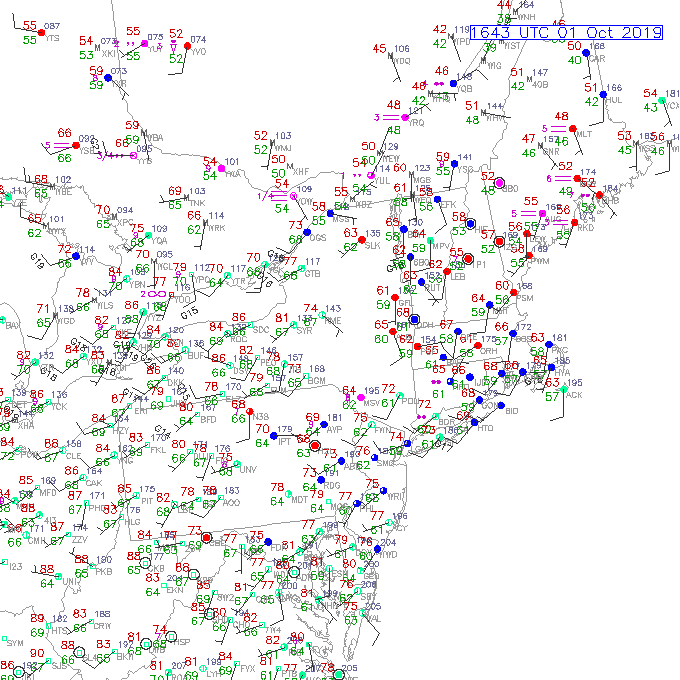-
Posts
90,902 -
Joined
-
Last visited
Content Type
Profiles
Blogs
Forums
American Weather
Media Demo
Store
Gallery
Everything posted by ORH_wxman
-
I agree the hype surrounding it is obscene compared to the risk...and I haven't been immune. We've been putting bug spray on my son every time he goes outside. But this past weekend when I did it, the thought came to me how paranoid I must look if the pre-parent version of myself looked at this....or simply the analytical half of my mind rather than the parental/instinctive side. It is almost certainly more dangerous for me to take my son with me to the grocery store in my car, and yet I do it without hesitation.
-
Interesting discussion there....and a good one. Tom was the same class as Chris (OceanStateWx) at Cornell.
-
Well like i said, since EEE is a little more complicated than malaria and Zika, I'm pointing out why EEE might not be as simple as more mosquitoes = more EEE cases...not that it's a huge distinction when there's the aforementioned Zika/Malaria to worry about too. I think most see more mosquitoes as a bad thing anyway. Nobody likes them.
-
No it doesn;t...the tropical PAC looks decent too. Cooler anomalies in the eastern ENSO region than the west.
-
Yeah the BOS drift has been really obvious for months going back to winter...at this point, there is no "explaining it away". It's messed up. There's something up with the ASOS itself or (more likely IMHO) something up with the siting. As you said, a month of a certain type of airmass could affect it, but the fact this has been consistent across all types of patterns and airmasses is very strong empirical evidence.
-
EEE is a little more complicated than something like malaria because a mosquito has to bite an infected bird first and the disease is not transmitted from person to person after infection like Zika or malaria is. So the sole method of the virus spreading is dependent on an additional non-human carrier which is more likely to be affected by CC than humans themselves are.
-
ORH actually used to run a little warm...if you want to call it that (it was only by about a degree or less) but it sort of gradually got back to the zero line by 2017. That could be completely due to mesosites around it though when it's that small of a shift. I think ORH looks colder than it really is now because of sites like BED and BOS that have strayed warmer on MADIS.
-
Moved the EEE and CC talk to the banter thread....lets try and keep this one clean. We're in the preseason now before winter gets going and the site traffic really picks up
-
-
-
-
Well lets start with this......CC is real and we are warming from it. But the scientific literature on attribution studies is not often portrayed in the media accurately. I'm not going to dive into the depths of policy discussion and what not in this thread...it's not the place for it. But inaccurate portrayal of the literature in the media will only cause damage to the credibility of the movement to do something about CC. People should also keep in mind when some of these studies come out, there are several scenarios presented....usually the one that gets presented in the media is the "worst case scenario", which I typically find not credible because they are based on unrealistic RCP scenarios from the IPCC climate models....as an example, the worst case scenario from the last report is called "RCP 8.5"....now you might think that the worst case scenario is just the continuation of the status quo, but it actually isn't when you dive into it. One of the assumptions it makes is we will rebuild our coal energy usage to 7x it's current size despite the fact that coal usage peaked in 2014 and the decline has only accelerated since then. So...yeah, is it theoretically plausible to build global coal infrastructure to 7x the current size? Yes, but in what realistic world does that happen? There are some other similar assumptions in that any progress made in green energy reverses and nearly disappears....again, something that doesn't really pass the smell test in terms of reality. This doesn't mean we shouldn't be concerned...there's plenty of reason to be.... but it is just simply an informative caution about taking these worst case scenarios at face value.
-
It's a good lesson in being a skeptic at lead times longer than a few days for big warmth this late in the season. There's a lot of things that can "go wrong" to negate it. With the PJ much further south than we had in August, we get more sneaky highs from confluence and more little waves forming closer along the front. The longer night can reinforce the CAD from those highs too...make it take longer to mix out during the day which can slow the progression of surface warm fronts. So we get a lot of pretty colors at 500mb, but pretty meh at the surface. Should be pretty mild overnight though tonight.
-
Yep, there's a ton of variables...including the birds themselves like I mentioned. You can't get it unless a mosquito bites an infected bird first and then bites you (hence why the chances are astronomically low to begin with)....but all that stuff from land use, to how CC affects precip on a regional scale, to how it affects birds all plays a role. It's why there should always be caution in attribution studies that have 2nd and 3rd order layered impacts. Something like straight temperature/heat waves is easy, but other stuff like EEE is really complicated. Hell, even actual weather like hurricanes is very complicated too. Can you imagine the fever pitch of articles and media talking about attribution if we got another 1938-1955 period for tropical cyclones on the east coast?
-
We had outbreaks of EEE in SNE in 1938, 1955/1956, 1970, 1989, and 1996...we just never heard as much about them back then. Even more recently, there were outbreaks in 2012 and 2004-2005. It's not really clear how CC makes it worse if at all. If everything is held constant with the lone exception of lengthening the summer season, then it would give a higher chance of getting bitten by an infected mosquito. But of course, not everything is held constant when it comes to CC. It has to be transmitted through birds first before a mosquito can bite an infected bird, and say if birds decline because of CC, then that reduces the chances of a mosquito carrying the virus. That's just one example of all the layers one has to go through before automatically saying CC = more EEE.
-
Yep. He lives in a pretty high-gradient area there in N RI. You can go about an inch per mile at the max there from PVD metro to parts of N Cumberland. And like dryslot said, hopefully he brings good juju in his first winter like wxblue did and not Mid-Atlantic snow climo.
-
Wow that's awesome. Already powdery too and they have a LONG way to go with this system. At least another 36 hours...heaviest yet to come.
-
Nice ginxy. Getting Fozz hooked on the RI beaches.
-
Highly unlikely but it looked like euro had some up in far NNE. Rangeley area over to Pittsburg...maybe Presidentials to picnic tables too.
-
Could be foliage that is making a difference. We're still at tail end of warm season where the extra shade and foliage can suppress neighborhood PWS temps vs airport ASOS temps. Or it could just be rounding/calibration errors which if they are 1 degree off could make your temps equal. Your spot theoretically should be about 1 degree warmer.
-
Yeah nice wave ejecting out of the Midwest with that obscene sprawling Scooter high. That's a look we take in winter
-
Yeah rad spots look prime. Don't think ORH gets there though.
-
That's a strong Scooter high. We'd prob be able to work with that on like 11/15 or 11/20 even ala 2004.
-
Next Thursday could be downright putrid if that wave forms on the front and we get stratiform rain. Prob like mid to upper 40s and rain type stuff if that happened. Hooefully it's just cloudy and 50s. Definitely a sign of getting deeper into the season.
-
The best explanation I can come up with is that mixing will be better over the warmer water with cold air above it...so if you already have some pretty steep lapse rates with the CAA in the cold sector of the storm, those low level lapse rates will be enhanced even more over the warm water creating better localized winds and as a result, higher waves?






